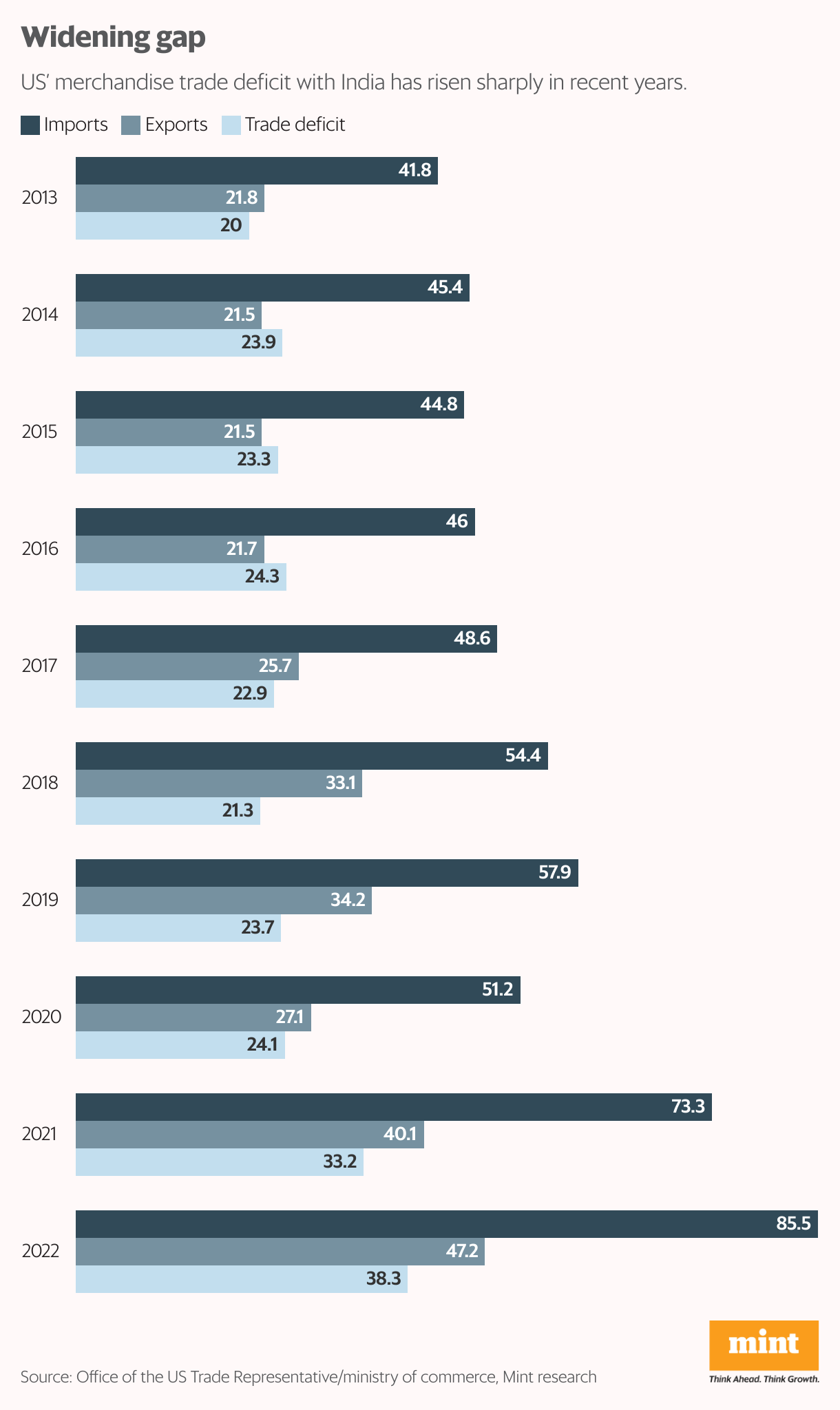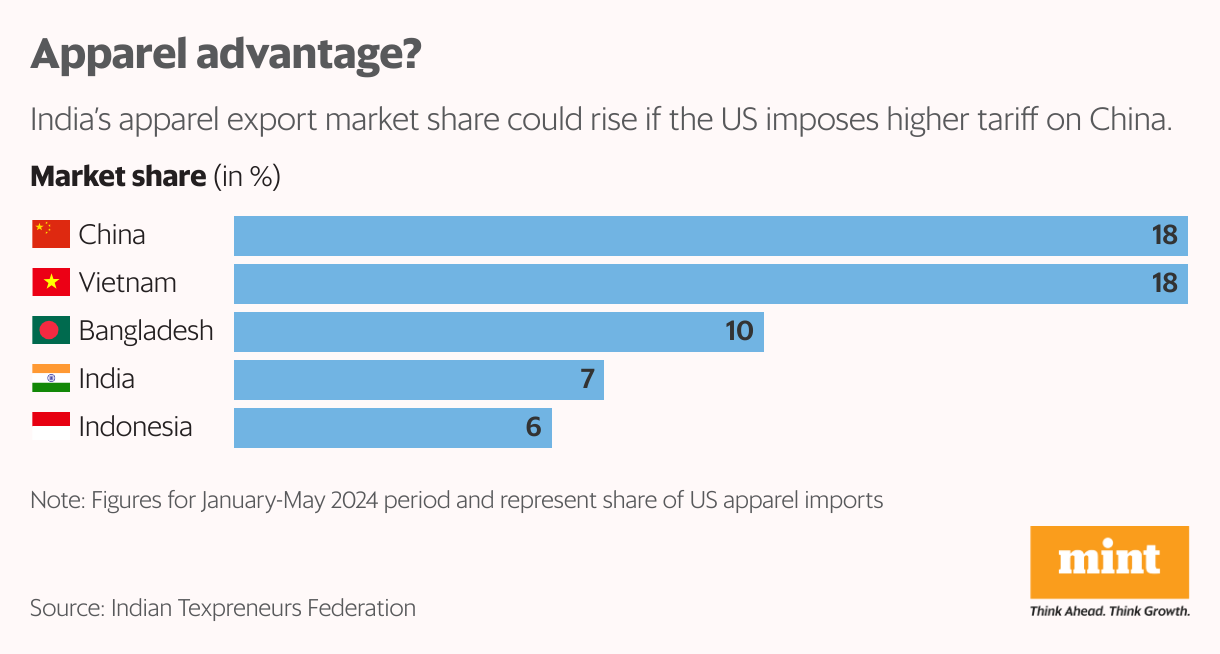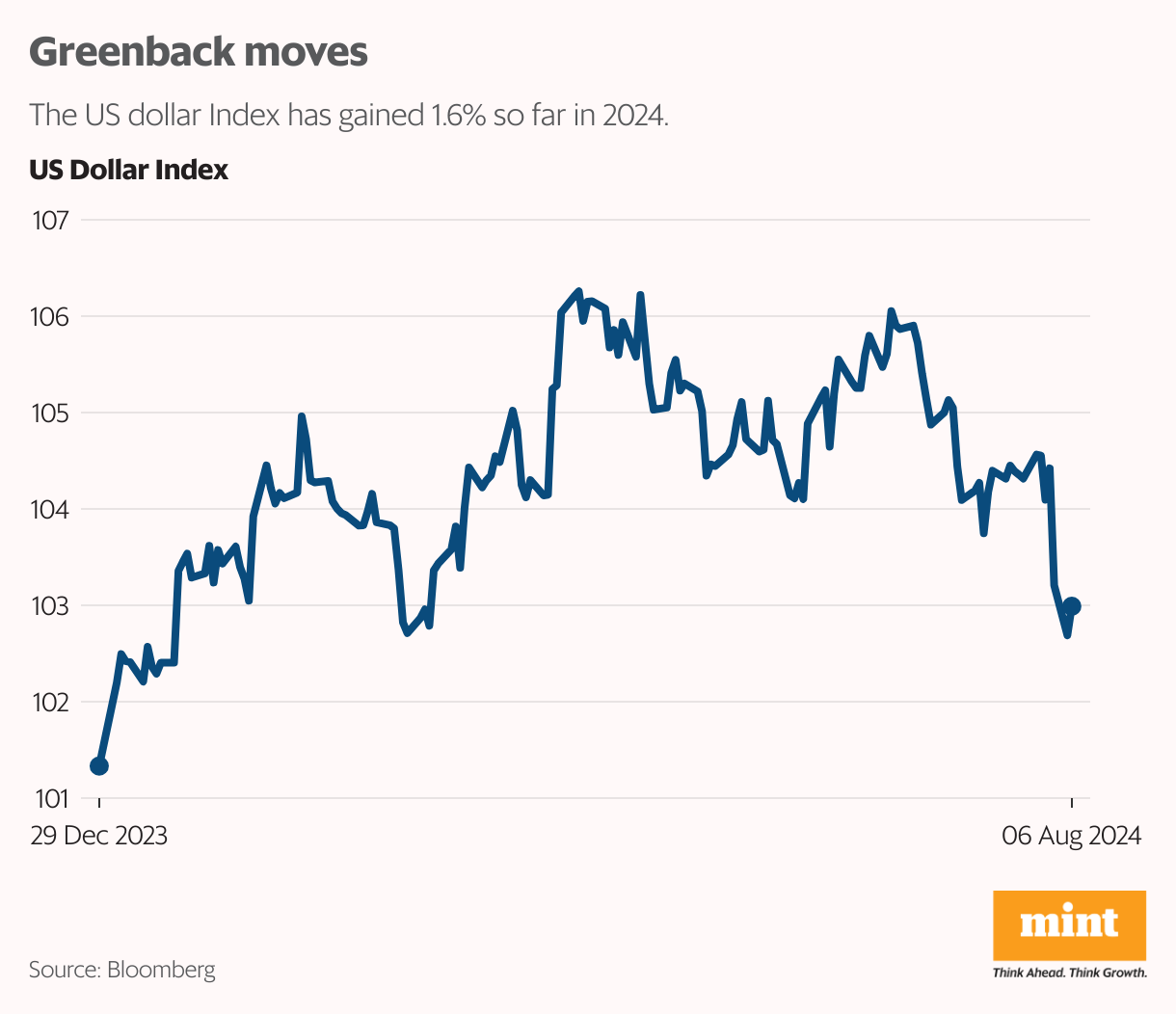Trump had just started a trade war with China and imposed tariffs on the imports from major trading partners. The move effectively dismantled the multilateral trading system that was in place and made the World Trade Organization (WTO), which deals with the global rules of trade between nations, look meek if not irrelevant.
Six years on, as the Republican presidential nominee for the 2024 elections, he is set to burnish his ‘tariff man’ image yet again, going by his campaign statements. In fact, this time, he is threatening to impose even more tariffs and engage in an even bigger trade war with China.
Tariffs are not the only reason why the world, including India, is looking at the forthcoming US presidential elections with a certain amount of nervousness. The Republican presidential nominee has called for a weaker dollar and promised mass deportation of undocumented migrants. If implemented, these measures will have a far-reaching impact across the world. There are geo-political fears as well. Experts fear that he could deepen the cold war with China and accelerate the world’s division into various blocs.
The big question: Will the fragile global supply chain, which is yet to recover fully from the aftershocks of the covid-19 pandemic, survive a Trump 2.0? And what does Trump as president mean for India?
The chances
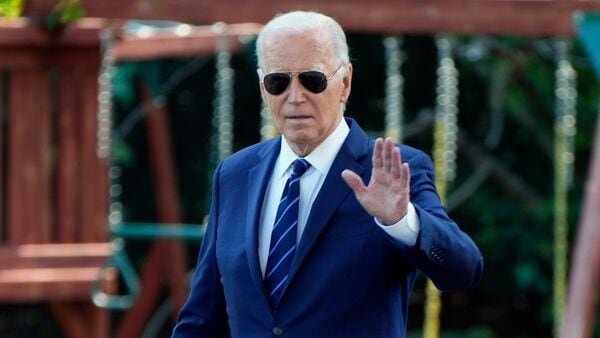
View Full Image
In the last 45 days, Trump’s chances of winning the election have brightened. Late June, a disastrous presidential debate exposed president Joe Biden’s health issues. Mid-July, Trump escaped an assassination attempt while addressing an election rally in Pennsylvania. The sympathy that it created for the former president saw him pulling ahead in the race.
Democrats have since convinced Biden to step aside and vice-president Kamala Harris has become their presumptive nominee. If recent opinion polls are to be believed, she has even managed to reduce the gap with Trump.
“It is hard to assess Trump as he is disruptive and unpredictable,” says Ajay Bisaria, a former diplomat. Unlike in 2016, Trump today has total control over the Republican Party. He has either won over or vanquished party seniors who challenged him on various policy issues earlier. If he wins, Republicans could control both the Senate and House of Representatives, Bisaria said. That will give him enormous power to frame policies and he could become belligerent, he added.
“There is also another view. While he may campaign from an extreme right-wing position, he will govern more as a centre-right politician,” Bisaria further said.
Mixed bag for India
Either way, some believe that India need not be apprehensive. “Our relationship with the US was good during Trump’s first stint as president. We were even quite close to a trade deal,” said Sanjeev Sanyal, economist and member, the economic advisory council to the prime minister of India.
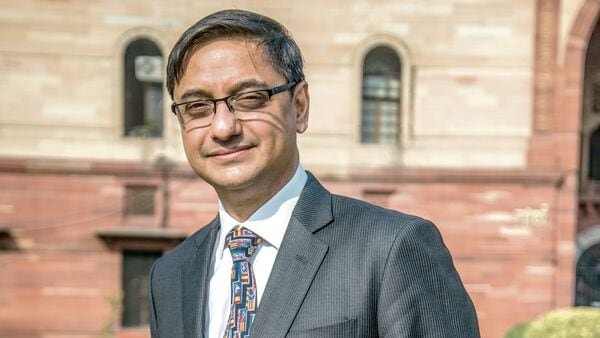
View Full Image
“Indian companies will see both opportunities and challenges. We will have to be ready for both,” felt R. Dinesh, executive chairman, TVS Supply Chain Solutions, and immediate past-president, Confederation of Indian Industry (CII).
What riles Trump the most is the US’ trade deficit, excess of imports over exports (see chart). It is highest for China at $367 billion in 2022, the period for which latest figures are available. India’s is relatively lower at $46 billion. Trump blames it on predatory trade practices.
To strike back, he has been talking of imposing a flat additional 10% tariff on imports and over 60% on those from China.
“It is not clear if the 10% tariff on imports will be selective or across the board. India may see tariffs on steel and aluminium going up,” says Dhruva Jaishankar, executive director at Observer Research Foundation (ORF) America, a think tank.
Higher tariff on Indian exports will make some products uncompetitive while in the case of others, the margins could be hit. US’ merchandise imports from India in calendar year 2022 stood at $85.5 billion. Merchandise exports to India were at $47.2 billion, leaving the US with a merchandise trade deficit of $38.3 billion.
The overall trade deficit, both merchandise and services, in 2022 stood at $45.6 billion.
A sharp increase in tariff on Chinese exports will have a dual impact on India. Dumping of Chinese goods in India and other markets will see an exponential increase. “We need to be ready to fortify our defences and impose anti-dumping duties quickly. This is one area where we have been slow. By the time investigation is done and the anti-dumping duty is imposed, the damage is done,” said a corporate executive whose industry is presently battling massive Chinese dumping. He did not want to be identified. “Indian exports will also be hurt as China will dump in our export markets, too, at very low prices,” he added.
So, what are the positives R. Dinesh talks about?
Some sectors like textile could do well. “A higher duty on Chinese apparels will see more volumes coming India’s way. It will help us increase our share in US apparel imports which is just 7% now,” hoped Prabhu Damodaran, convenor of Coimbatore-based Indian Texpreneurs Association.
A US-China trade war will also accelerate the shift in manufacturing capacity away from China. “Some of that capacity can find its way into India,” said Vivek Mishra, fellow-Americas, ORF.
However, this shift would be limited—in the past, China had found ways to beat US tariffs. For instance, Chinese companies have set up facilities to export semi-finished products into Mexico. These products are finished in the country and then routed to the US taking advantage of the North American Free Trade Agreement (NAFTA). The agreement, signed by Canada, Mexico and the US, established a free-trade zone and has been in place since 1994.
This explains why the US trade deficit with Mexico, which was $81.5 billion in 2018, has risen sharply to $132 billion in 2022. “Mexico could face the bulk of Trump’s ire when it comes to tariffs,” Mishra added.
Did tariffs work?
Trump believes that higher tariffs will penalize countries that adopt unfair trade practices, result in manufacturing returning to the US and create more jobs. But those opposed to this idea have said that tariffs will do little more than becoming, in effect, a tax hike.
A study by Peterson Institute for International Economics, a non-partisan think-tank, has said that Trump’s tariff hike during his presidency increased US household spending by $1,700 a year. A 2023 study by the US International Trade Commission, an independent federal agency that provides analysis to the White House and the Congress, said that the US importers bore nearly the full cost of the tariff hike. This has led many to warn that a steep hike in tariffs could cause inflation to spike again.
The tariffs also did not result in manufacturing moving back to the US. A study by St Louis Federal Reserve economists has said that more jobs were lost in the US manufacturing sector than those that were created.
Higher tariffs did pressurize China to come to the table and negotiate a new trade deal. In January 2020, phase-1 of a new trade deal was signed by the US and China. The US reduced some tariffs while China committed to increase purchase of US goods and agricultural products by $200 billion. That did not happen, and phase-2 agreement was never reached.
Some experts said that the tariffs worked more politically than economically for Trump. People in the US’ industrial belt, those who were hurt by the shift in manufacturing to China over the last few decades, identified themselves with Trump.
Weaker dollar
Trump and his advisors have been stressing the need for a weaker dollar.
“They blame a strong dollar for making US manufacturing uncompetitive and hope that a weak greenback will bring manufacturing back into the US,” said Jaishankar.
A strong dollar typically makes exports costly, and imports cheaper.
Weakening of the dollar will impact all major economies of the world. India will be hit too. A weaker dollar will hurt Indian exports, both merchandise and services. It will also reduce the return investors make from their investment in the Indian equity and debt markets. That could trigger a flight of capital.
But weakening the dollar is easier said than done. Selling dollars and buying foreign currency will be costly. The US government can get the Federal Reserve (Fed) to print more dollars (it will increase the supply of dollars) or cut interest rates (outflow of capital from the US will increase supply of dollars). Both measures will fuel inflation, something the Fed will not be keen to attempt.
The other option, experts said, is to introduce capital controls. That will cause the stock market to fall, something Trump is not comfortable with. Some have pointed out that the dollar’s value will decline on its own once the interest rates fall in the US.
Mass deportation
Immigration is the topmost concern among the voters in the US today and Trump is milking the issue to his advantage. In every campaign speech, he has promised to start the biggest deportation operation the world has ever seen.
In an interview to Time magazine, Trump said that he will target 15 to 20 million migrants and will use the National Guard or even the military to round up undocumented migrants throughout the country, move them to detention camps, and pack them off to the country of their origin.
For Indians, H1B visas and Green Cards could become difficult.
— Dhruva Jaishankar
Experts have warned that large-scale deportation will heat up the job market and bring inflation back causing the economy to slow down. Peterson Institute, in a study, stated that the outcome will be even more disastrous. Deporting just 1.3 million migrants will cause the US economy to shrink by 2.1%, essentially slipping into a recession.
Present and past officials of the US Immigration and Customs Enforcement (ICE) call it a logistical nightmare. Tracking down 15 to 20 million undocumented migrants is not easy; they will then have to be housed, paperwork done, and enough planes have to be found to transport them back to their countries.
ICE officials have said that such bottlenecks can limit deportation to a maximum of 30,000 people a month. And costs will be astronomical.
“Mass deportation is just a statement of intent. What will effectively happen on the ground will be more practical,” said Bisaria. “For Indians, H1B visas and Green Cards could become difficult,” Jaishankar added.
The H-1B programme allows employers in the US to hire non-immigrant workers in specialty occupations. These visas are widely used by Indian IT services companies with operations in the US. A Green Card allows one to live and work permanently in the US.
The unknowns
Another area of concern is climate change and the funding needed to mitigate it.
“A Trump administration will not put enough resources for tackling climate change, disaster management and shift to clean energy,” said ORF’s Mishra. “India and the US will traverse different paths,” he added.
Nonetheless, Trump can potentially do the world some good. If he can stop the Russia-Ukraine war, as he has been promising, it will ease tensions around the world and aid global economic growth.

View Full Image
During his presidency, he came close to easing tensions in the Middle East and almost got Israel and Saudi Arabia to normalize relations. Any such thing is good news for the India-Middle East-Europe Economic Corridor, a project aimed at boosting connectivity and economic integration between Asia, the Persian Gulf and Europe.
Meanwhile, in recent years, India’s foreign policy has evolved. “Earlier, we were not sure what we wanted and, therefore, we could not articulate it well. We were also inflexible in our approach,” said Sanyal. That has changed. “Today, India has clearly articulated what it wants. We want to protect our energy supplies at the right price, ensure trade and investment flows remain unaffected, ensure there are no unfair practices that affect the domestic industry or our ability to export and ensure defence preparedness. We are not non-aligned but multi-aligned, depending on the issue,” he added.
This approach can help India deal with a VUCA (volatility, uncertainty, complexity, and ambiguity) world and a possible Trump 2.0 regime.


